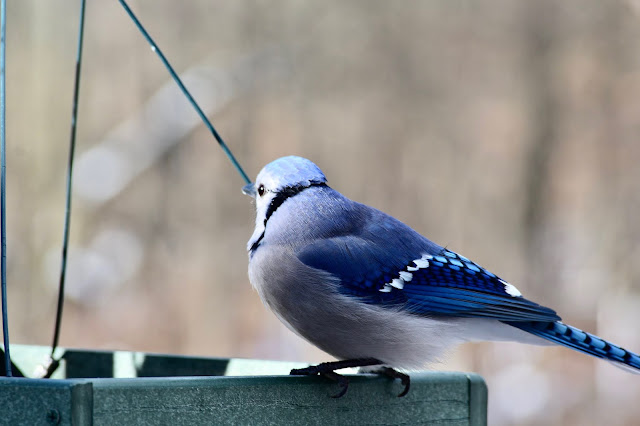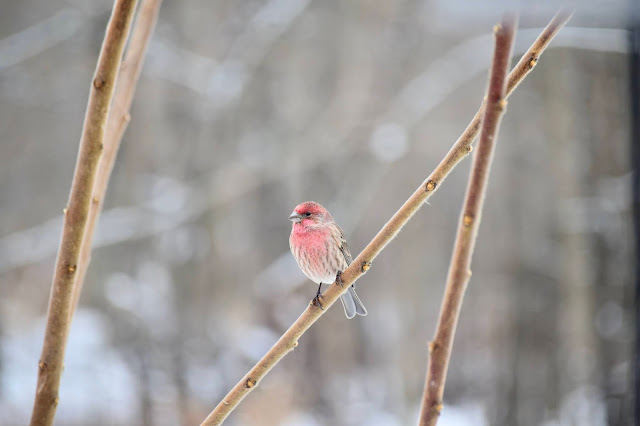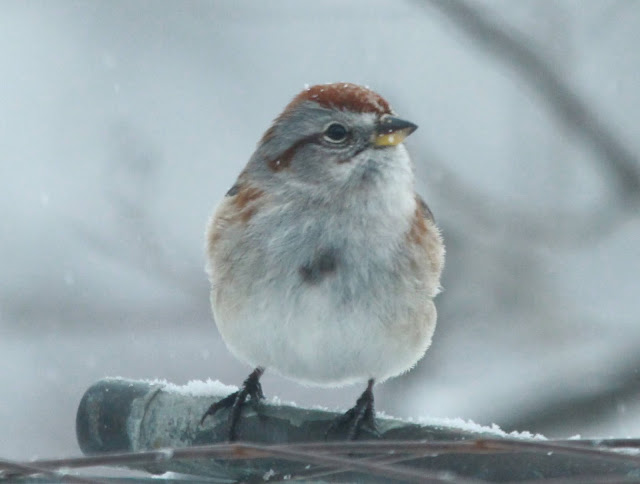Buying Binoculars in brief
Binoculars are a birder’s most important tool. There are a lot of specifics about binoculars that you might want to research before buying. But a short-cut is to google “binoculars for birding” and read several reviews and summaries. e sure to research specifically birding binoculars!
There are kinds of optics on the market that are fine for watching an opera or a Broadway play, or for bringing with you to a football game.
Others are small and lightweight, great for, say, long-distance hikers – but they’re frustrating for bird watching because it’s hard to find birds quickly through such a limited field of view.
Other binoculars are designed for hunters, so they can see deer from a great distance. Others are for people on ocean-going boats who want to focus on objects that are miles and miles and miles away – but using these binoculars for birdwatching can give the user a bad case of what feels very much like sea-sickness.
Most birders choose magnification of 7x or 8 or 8.5. Any more makes it impossible to focus on small birds and often make people queasy because they’re so hard to hold steady.
It’s always a good idea to try binoculars before buying. Unfortunately, there’s no local store that has lots of birding binoculars to try and compare. If this pandemic ever eases, maybe you can go on a few bird walks with other people and ask to take a look through their binoculars.
Bernie loves his Nikon Monarchs, which are popular with many birders. They usually sell for under $300. Nikon also makes several “entry-level” models, in the $120 dollar range, that get good reviews and have the same excellent lifetime warranty.
These links will give you a good overview of what’s out there:
It would be great if you could get a few pairs to try out, because different people find different binoculars very – well … different.
I used to love Eagle Optics because they’d always send multiple pairs and because there was always a human to talk with if you called; they went out of business a few years back but passed the torch to Redstart Birding: https://redstartbirding.com/collections/binoculars See notes near the end of this post that explain Focusing and Calibration, and interpupillary distance, magnification, etc.
Buying Binoculars in more detail
Buying Binoculars? - Some Things to Consider. Binoculars come in an incredibly wide range of prices, from a few that are just a little over a hundred dollars up to many that are over $2000. In general, you get what you pay for – but this isn’t always the case. Every now and then a relatively inexpensive set of binoculars comes along that amazes everyone.
The most important thing is to try binoculars before buying. Unfortunately, there’s no local store that has lots of binoculars to try and compare, so your best bet is to go on bird walks with other people and ask to try out their binoculars.
Weight
Standard-sized binoculars are much better for birding than compacts. The extra weight is worth it because you’ll be getting greater quality and clarity. However, you’ll make excuses not to carry binoculars that are too heavy. Again, try before you buy!
Binocular harnesses take a lot of pressure off your neck, distributing weight evenly across your shoulders and chest.
Interpupil Distance
If you can’t adjust the binoculars properly to the distance between your pupils, you won’t be able to use them as binoculars.
Magnification Power
“8x35” binoculars provide an image that’s magnified 8 times (as compared to seeing it with your naked eyes). More power is NOT better for birding binoculars. Don't get talked into buying 10 or 12 power glasses. They're incredibly hard to hold steady and you can't focus on anything close. People who watch songbirds usually have binoculars in the 7x to 8.5x range.
Optical Performance
Best way to test this: Set up an eye chart a good distance away and see what’s the smallest line you can read.
Ease of Focusing
• How much do you have to turn the focusing mechanism to go from watching a warbler in a bush right in front of you to checking out an osprey overhead?
• How smooth does focusing feel? Low-quality binoculars feel as if there’s grit in the mechanism.)
Minimum Focusing
Distance Some binoculars focus down to 5 feet; others are blurry at any distance under 25 feet! Many birders also enjoy watching butterflies and dragonflies. They need binoculars that allow them to focus on distant birds as well as beautiful flying creatures that are just a few feet away.
Brightness
Divide the size of the objective lens (the 35 in 7x35) by the binocular’s power (the 7). In general, the larger the answer, the brighter will be the image you see through your binoculars. (However, inexpensive 7x35s with poor optics and poor lens coating may lose so much light that they’ll be “darker” than a pair of 10x40s with good optics.)
Sturdiness
Some binoculars can survive many hard bumps without losing any of their optical quality. Others get knocked out of alignment the first time they roll off the car seat onto the carpeted floor. Tell the salesperson where you’ll be using your binoculars and how hard you usually are on your equipment.
Water Resistance
If you’re going to do a lot of birding in fog, early morning, or from a boat, make sure your binoculars’ water seal has a good reputation. (Most binoculars from reputable companies do fine!)
Maintenance/Life Span
Good binoculars will last for many years, but they might occasionally need to be cleaned or (after a few hard knocks) “re-columnated”. Most reputable binocular makers have good warranties. (Birders tell stories about getting their favorite “bins” replaced for free after they’ve left a pair on a car roof or dropped them in a swamp.) I’ve had very good service through Land, Sea and Sky, a Houston company that’s been repairing sports optics for decades. They have contracts to do repair work for several binocular makers. Last fall, after three incredibly soggy days at Plum Island, my “waterproof” binoculars ended up full of condensation. Land, Sea and Sky took them apart, dried and cleaned them, returned them to me within a week, and charged me only postage.
Eyeglass compatibility
All good binoculars have eye cups that can be adjusted for use with or without eyeglasses. However, eye cups differ greatly. Some twist up, some are pushed or pulled, some have to be folded down. Many birders have strong opinions about what system works best. If you wear eyeglasses, talk with other eyeglass wearers before buying.
Some Suggestions
Google "binocular reviews" and you’ll find several helpful sites. It’s best to read more than one site to get a balanced picture.
• Check out BirdWatching magazine’s advice and reviews at http://www.birdwatching.com/optics.html
• Audubon has lots of useful information at http://www.audubon.org/gear/binocular-guide .
Note: New models come out very quickly and old ones get retired, so you might not always find the specific binoculars that were recommended by a friend.
YOU PROBABLY DON’T HAVE TO PAY THE LIST PRICE!!
Maeve Kim 2012 – revised 2017
--------------------------------------------------------------------------------------------------------------------
Focusing vs Calibration
Most people know how to focus their binoculars using the central focusing wheel to focus both barrels on the binocular simultaneously. But this is only part of the story! You also need to calibrate your binoculars for your own vision, for any differences between your left and right eyes. Calibrating binoculars needs to be done only once and takes less than a minute.
How to Calibrate your Binoculars using the Standard Diopters The most common place to find the diopter adjustment is on either the right or left barrel of the binoculars near the eyepiece.
1. If the diopter adjustment ring is on the right barrel (which is the most common-place), shut your right eye and leave your left eye open, or just cover the end of the right barrel with your hand. (Do the opposite if the diopter’s on the left barrel.)
2. Keeping your eye shut, use the center knob to focus on an object about 30 feet away until it becomes sharp.
3. Now open your right eye and shut your left eye.
4. Look at the same object and turn the diopter ring until you see the object in sharp focus.
Look through the binoculars with both eyes open. You should have a clear, crisp view of the object. The binoculars are now correctly calibrated for your vision. From now on, all you have to do is use the central focusing wheel to bring each new bird into sharp focus, depending on how near or far away it is. (You might have to recalibrate after letting someone else use your binoculars, if he or she has very different vision than your do.)
How to Calibrate your Binoculars if the Diopter Adjustment is on the Focusing Wheel
Some binoculars have the diopter adjustment located in front of the central focusing wheel. To adjust the setting, first focus your binoculars on something as normal, but with only one eye open (usually your left), keeping the other shut. Then you swap eyes, look through the binos with the one open eye (now usually your right) and, then instead of turning the focussing wheel, you turn the diopter adjustment wheel located in front of the focusing wheel until the opened eye is now also perfectly focused on the same object. Once done, the binoculars will be perfectly calibrated to your eyesight. Take a look with both eyes at the object you used and it should be perfectly in focus.
Other Possible Configurations
There are also a few binoculars like the very high spec Swarovski EL binoculars pictured on the right have the diopter adjustment setting integrated into the actual focusing wheel itself. To adjust the setting on these, first you focus the binos on something as normal, but with only one eye open (usually your left). Then you pull back on the focussing wheel which engages the gearing on the diopter and exposes the graduated scale. Now close the opposite eye to the first step and look through the binos with the open eye and then just turn the wheel as you would during normal focussing, because the diopter gearing is engaged, the wheel now usually turns with a number of click-stops and you continue until the opened eye is now also perfectly focused on the same object. Then you just click the diopter adjustment/focusing wheel back into place to lock in your setting with your binocular perfectly calibrated to your vision.


























































